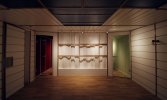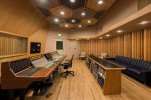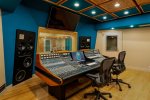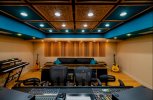- Joined
- Jul 31, 2019
- Messages
- 334
- Likes
- 3,062
<<<nother approach to achieve spaciousness without this and maintain accuracy is using a high level of lateral later arriving diffuse energy. Something Harman never included in ther researchers to my knowledge but others have and it's often used in the studio world.>>With a mono test with the speaker placed in the middle, the side wall specular reflections are at a lower level. So this takes the room a bit more of out of the play compared to having speakers closer to side walls with no side wall treatment.
Optimal position for each speaker can makes sense. As a speaker designer you have to tune the low frequency with a certain type of room gain and how a designer does this can vary. Some may tune it with a corner gain of 9 dB in, some with 6 dB, etc. And with a cardioid or a dipole, the best position generally are different compared to a monopole.
Multichannel is a step away from accuracy due to much more comb filtering and lobing. While one cannot hear discrete reflections in the same matter with many channels, everything is sort of a mess. Another approach to achieve spaciousness without this and maintain accuracy is using a high level of lateral later arriving diffuse energy. Something Harman never included in ther researchers to my knowledge but others have and it's often used in the studio world.
Personally I don't fancy multichannel for music and much prefer a late arriving diffuse tail. However, as a speaker designer it would financially be much better to sell more speakers to people.
That is what this does: The DI is adjustable from cardioid to almost omni - with something in between.
SoundSteer Technology from Lexicon
As Stereophile's minister without portfolio, my goal was to find something interesting that didn't quite fit into traditional categories. The prize was an introduction, at a Harman demo room in the Hard Rock Casino/Hotel, to Lexicon's SL-1 loudspeaker prototype (price TBD) and the SoundSteer...
Most speaker designers design for flat anechoic frequency response on-axis. Designing a loudspeaker for an optimal position makes absolutely no sense unless it's intended to be used in/on a wall.
Otherwise, you cannot predict where people will put it or what the size and acoustics of the room will be. It has to be designed to sound good in all types of rooms, and hopefully have controls or the ability to adapt to the room acoustics via calibration or auto-correction.
Last edited:





